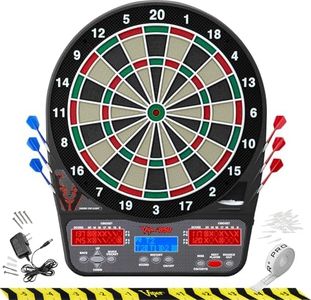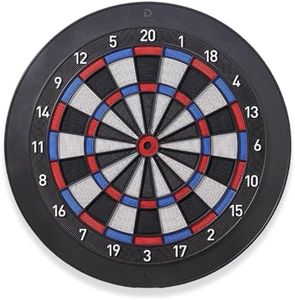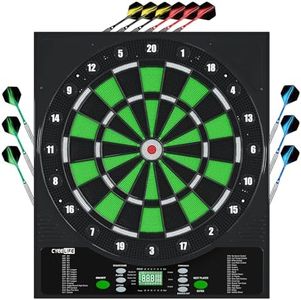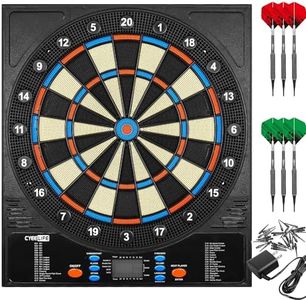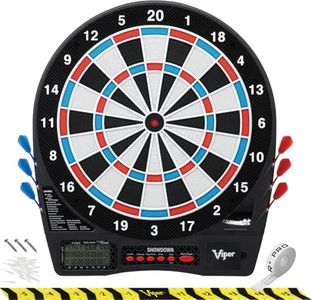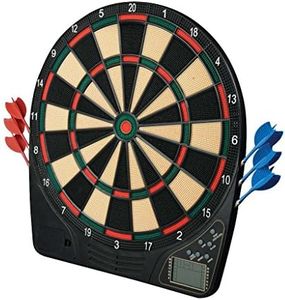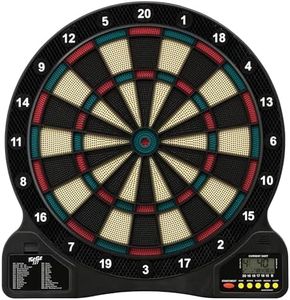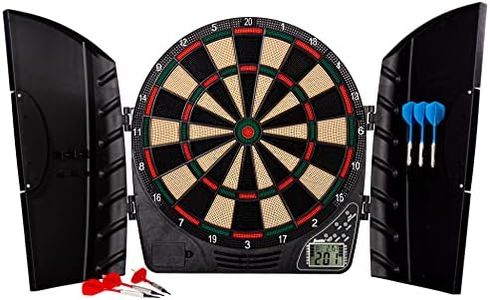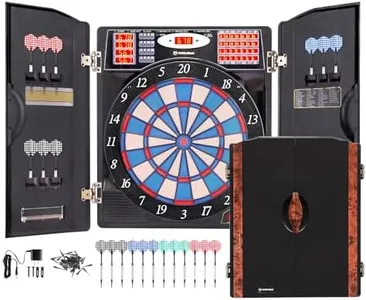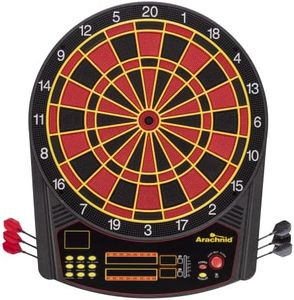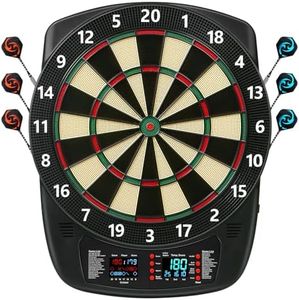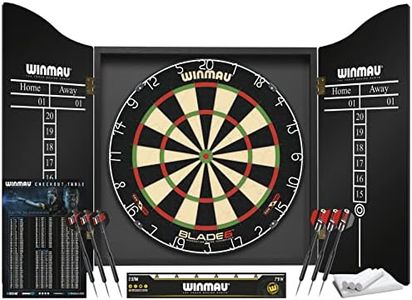We Use CookiesWe use cookies to enhance the security, performance,
functionality and for analytical and promotional activities. By continuing to browse this site you
are agreeing to our privacy policy
10 Best Electronic Dartboards
From leading brands and best sellers available on the web.Buying Guide for the Best Electronic Dartboards
Choosing the right electronic dartboard can really improve your playing experience, whether you’re a beginner, a regular hobbyist, or setting up a fun game room. The best approach is to focus on the qualities that affect playability, durability, and ease of use, while considering your own playing needs, available space, and who will be using the board most often. Pay attention to the main features and decide which ones truly matter for your enjoyment and skill development.Target Area SizeThe target area size refers to the diameter of the main scoring surface where the darts land. This is important because a regulation-sized board mimics the feel of professional play, while smaller boards can be helpful for kids or for spaces with limited room. Standard tournament size is 15.5 inches, and this is a good fit for most adults or anyone wanting to practice seriously. Smaller boards, around 13 inches or less, are easier to fit into tight spaces and are less intimidating for new players. To decide, think about who’s playing most often and how much wall space you have.
Number of Games and VariationsMost electronic dartboards come loaded with pre-programmed games and variations. This spec refers to how many different games (like 301, Cricket, etc.) and rule sets are included. A high number means more variety and fun, helping prevent boredom over time. Some people may never use most of these variations, so consider if you actually enjoy trying new games or mainly stick to the basics. If you like experimenting or are buying for a group with diverse interests, more games can keep things interesting. Otherwise, a board with the main popular games is often sufficient.
Number of PlayersThis specification tells you how many people can play at the same time. Standard boards might support 2 to 4 players, while higher-end models can accommodate 8 or even more, sometimes in teams. The more players supported, the better for parties or large families. If you mostly play solo, or with one friend, a lower number is fine, but for group events you’ll appreciate a board that manages scoring and turns for everyone.
Display and ReadabilityDisplay and readability refers to the clarity and size of the electronic scoreboard, often an LCD or LED screen that shows scores, players, and game options. This is crucial because a good display makes it easy to track your score and who’s up next, especially in groups. Larger, brighter screens are easier for everyone to see from a distance and reduce confusion during play. If your game room is dimly lit or you have trouble reading small text, prioritize boards with big, bright, clear displays.
Durability and Build QualityThis spec covers how strongly the board is constructed and how well it will hold up over time. Since darts are thrown at force and frequently, a durable board will last longer and maintain its appearance and performance. Look for boards with a strong, well-assembled frame, firm plastic segments, and reviews praising longevity. If many people (including kids) are using it, aim for a sturdy board that can take regular use. If the board will be used only occasionally, this may be less critical.
Bounce-Out RateBounce-out rate refers to how often a dart hits a segment or wire and bounces off instead of sticking. Low bounce-out rates make the game more fun and fair, especially for serious players. This depends on the quality and thickness of the segment dividers—thinner dividers mean fewer bounce-outs. If you’re aiming to improve skill or play competitively, look for a board known for low bounce-outs. For casual play, it might not be as vital.
Dart Type (Soft Tip Compatibility)Electronic dartboards are designed for soft-tip darts, which are safer, especially around kids. Some boards come with darts included, while others allow you to buy replacements or upgrades. It’s important to make sure the board supports the typical standard soft-tip darts, so you’re not restricted when replacing them or looking for better options. If you have a preference for a particular dart weight or style, check the compatibility before buying.
Power SourceThe power source tells you whether the dartboard runs on batteries, plugs into the wall, or offers both options. This affects where you can install the board—battery-powered boards are easier to put anywhere, while plug-in boards avoid running out of power at inconvenient moments. Consider your space: if the board needs to be movable or there’s no outlet nearby, batteries or dual power may be better. For a permanent setup near an outlet, a plug-in model is hassle-free.
